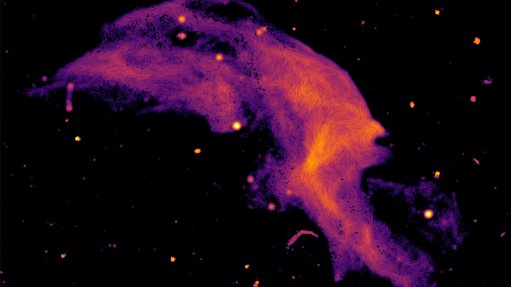
Cosmic shock wave
An international team of astronomers has made available detailed images of what is known to be the largest visible cosmic shock wave from Earth.
The team comprises of experts from Italy-based National Institute for Astrophysics (Inaf), the Cluster of Excellence Quantum Universe at Universität Hamburg, the University of Helsinki, the Netherlands Institute for Space Research and the South African Radio Astronomy Observatory.
These gigantic shock waves are much larger than our entire galaxy – the Milky Way – and form when clusters of galaxies collide.
The team explains that our universe is populated by galaxies that are not uniformly spread but concentrated in vast structures.
The largest ones contain thousands of galaxies and are called "galaxy clusters".
Sometimes, two galaxy clusters start attracting each other through the force of gravity, leading to an inevitable collision.
Collisions of galaxy clusters are the most powerful events that occur in our Universe and they can generate spectacular “fireworks” that can be observed using modern radio telescopes.
When two galaxies collide, astronomers can witness the propagation of a pair of gigantic shock waves through the newly formed cluster, similar to the sonic booms from a supersonic aircraft.
“The shock waves act as giant particle accelerators that accelerate electrons to speeds close to the speed of light.
When these fast electrons cross a magnetic field, they emit the radio waves we can see. The shocks are threaded by an intricate pattern of bright filaments that trace the location of giant magnetic field lines and the regions where electrons are accelerated,” notes Inaf staff researcher Francesco de Gasperin.
These shock waves are still propagating through the newly formed galaxy cluster at the very high speed of 1 500 km a second, corresponding to a Mach number of 2.5.
This means that the shock front would cross the entire Earth in the time needed to read this sentence.
The size of the main shock wave is impressive, spanning the entire width of the galaxy cluster for a total size of 6.5-million light years.
For comparison, the Milky Way is more than 60 times smaller than this shock wave.
These unique observations were carried out using the MeerKAT radio telescope, in South Africa.